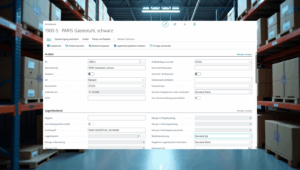Business Intelligence or, short, BI, is a set of operations, structures, frameworks, and technologies that translate raw data into meaningful, significant information that drives profitable business actions. Nowadays, people define BI as a collection of software and services with which they can convert data into actionable intelligence and knowledge.
BI directly impacts the organization’s decisions on a strategic, tactical, and operational level. Organizations will get support in fact-based decision-making, referring to historical data rather than assumptions and intuitive feelings.
Typical BI tools fulfill data analysis and establish dashboards, graphs, maps, and reports/summaries. It also provides charts to supply users with detailed intelligence about the nature of the business.
Why BI? Why is Business Intelligence crucial? Is it that important? Is it useful?
Let me make it short: whatever you want to know: the answer is yes.
- Create Key Performance Indicators based on historical data
- Identify and determine reference points for different processes.
- Identify trends and business problems you need to fix.
- Visualize data and enhance data quality and, therefore, the quality of decision making.
- It can be used not only by big organizations but small and medium enterprises as well.
Trends in Business Intelligence
When talking about Business Intelligence, there’s no way not to mention some analytics trends:
- Artificial Intelligence
AI and Machine Learning take on complex tasks done by human intelligence. Organizations can make use of this capability and work with real-time data analysis and dashboard reporting.
- Collaborative BI
Combine collaboration tools, social media, and more latest technologies to boost your teamwork and collaborative decision-making.
- Embedded BI
Integrate BI software or single features into your different business applications and improve and extend the reporting functionality.
How to implement Business Intelligence?
To implement BI systems, are three simple steps to follow:
- It extracts raw data from corporate databases (if needed: form multiple, heterogeneous systems)
- It cleans the data and brings it into the data warehouse, which then builds data cubes. Tables can be linked.
- The users can now require journals, work with ad-hoc reports or carry out any other analysis.
BI’s advantages and disadvantages
Talking all good about Business Intelligence makes it obvious: there are a lot of advantages and benefits. But are there some disadvantages, too? Let’s have a closer look at some points to consider and keep in mind:
| Advantage | Disadvantage |
|---|---|
| 1. Boosted productivity BI allows businesses to create reports with a single click, thus saving time and resources. It enables employees to be more productive on their tasks. | 1. Cost BI can turn out costly, especially for small and medium-sized enterprises. But its use may be expensive for routine business transactions. |
| 2. Improved visibility BI can optimize the process’ visibility. It also helps to identify any areas that need attention. | 2. Complexity Another downside to mention is its complex data warehouse implementation. It can be so tough that it can make business techniques stiff and inflexible. |
| 3. Fix accountability Business Intelligence assigns accountability in the organization. There has to be someone responsible for checking the organization’s performance against its set goals. | 3. Limited use Like all improved technologies, BI started to consider the buying competence of rich firms. So BI may not be affordable for many small and medium-sized companies. |
| 4. Bird’s eye view BI gives an overall bird’s eye view with its typical features like dashboards and scorecards. | 4. Time-consuming implementation It takes almost one and half years for a data warehousing system to be implemented entirely. Therefore, it is a time-consuming process. |
| 5. Business processes streamlines With BI, there’s no more business process complexity. It runs analytics automatically and provides predictive analysis, computer modeling, benchmarking, and other practices. | |
| 6. Easy analytics BI keeps on getting easier to work with – even for nontechnical or non-analysts users. They all can collect and process data quickly, which allows the power of analytics from many people’s hands. |


